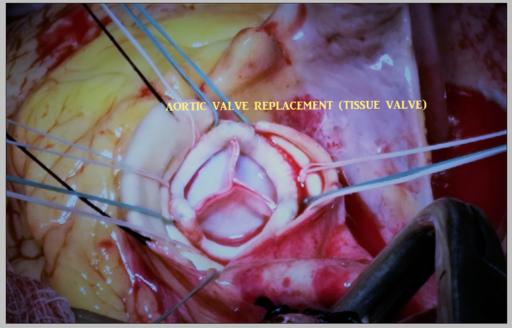Mick may be 75, but he seems to have chosen some cutting-edge care. While Mr. Jagger’s privacy concerning his upcoming surgery prevents us from knowing exactly what is planned I am going to make an assumption [1], that he is undergoing replacement of his aortic valve in a minimally invasive procedure. Let’s break it down.
The aortic valve separates the left ventricle from the aorta; it is the valve that separates the chamber of the heart pumping blood into our main artery. The ventricle provides most of the force to carry the blood throughout our body; the valve opens and closes in synchrony with the contraction to make the effort efficient. In aortic stenosis, the valve is narrowed, not opening fully and more rarely not closing fully as well. The inability to open fully makes it more difficult for the left ventricle to pump out the blood making the heart work harder. As a result of this obstruction blood backs up into the lungs where it may cause shortness of breath; or less blood will be pumped out and reduce the amount of blood getting to the brain, causing dizziness; or in some instances the increased work the heart must do in conjunction with blockages in the coronary (heart) arteries may cause chest pain. In the case of the aortic valve remaining open, aortic regurgitation, the inefficiency of the heart to pump blood out results in similar symptoms. In the presence of these symptoms, it is time to replace the valve.
The traditional method of aortic valve replacement was a relatively early triumph in the era of open heart surgery, now almost 60 years old. In this procedure the chest is opened, the heart is stopped, the patient’s circulation temporarily controlled by a machine. The aortic valve is subsequently removed and replaced either with a valve made from tissue (human or pig) or metal (mechanical) – and by replaced, I mean the surgeon cuts out the valve and sews in the replacement. Through the advances of modern medicine, we have reduced the stay for such a procedure to roughly 4 or 5 days. But because this is an operation on the elderly, sorry Mick, recovery takes longer; as a generalization, six weeks to feel more “like yourself” than an old person.
One of the problems with the surgery is that we operate upon elderly, sick and often frail patients, so our results are good, not best. Some of the reasons for poorer outcomes is the “physiologic insult” of having your chest opened and the valve torn out. So minimally invasive means that a properly replaced valve and are less physiologically stressful can improve our results, especially among the frail. Enter transcatheter aortic valve replacement or TAVR.
TAVR combines two advanced technologies, stents, and valves. In this procedure, a catheter is typically threaded up from the leg into the heart. A stent with the new valve attached is positioned using fluoroscopy (a form of x-ray imaging), and the stent is expanded simultaneously pushing the damaged valve out of the way and fixing the new valve in place. The catheter is removed, the opening closed (yes, there are still incisions an aortic valve is about the size of a quarter) and the patient typically leaves the hospital a day or two sooner. But more importantly, there is less physiologic stress, no opening the chest, no going on cardiopulmonary bypass so that recovery may be shorter. And even more importantly, with less physiologic stress the frailer can safely undergo this treatment.
TAVR is a sophisticated procedure, not just a hybrid of two technologies, but one that requires a team; it epitomizes the best we can currently provide. In developing the techniques, TAVR’s clinical trials first treated symptomatic patients without hope of surgical intervention and as it proved its efficacy and safety the scope of patients expanded. Additional trials using various TAVR devices have shown its effectiveness and safety for those with at lower risk who could safely choose surgery – what had been until recently the gold standard. The latest reports from the newly concluded meeting of the American College of Cardiology shows that for even low-risk patients TAVR is a good choice. With this new information in hand, the FDA is expected to approve the use of these devices in low-risk patients.
Irrespective of which procedure Mr. Jagger undergoes, I wish him a safe operation and speedy recovery. I just wish that Mick Jagger undergoing heart surgery didn’t make me feel so old.
[1] The press is reporting that Mr. Jagger is to undergo stenting of a heart artery and valve replacement. It makes little sense to place a stent in his heart artery minimally invasively, e.g., with a catheter, and then open him up to surgically replace his valve. If you were to open him, you could do a bypass of the artery at the same time.




